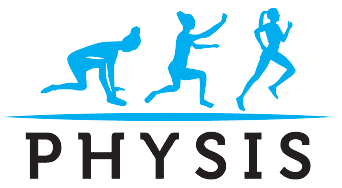
It is easier than ever before to access thousands of styles of shoes online. However, have you ever stopped to wonder if the shoes you admire are the right for you? This question applies to both men and women, equally.
Our feet are as individual as our personalities, so all mass-produced shoes are not right for you. Many adults today are wearing shoes that are not appropriate for them, resulting in aches and pains in their feet. Ultimately, wearing improper shoes can lead to the development of corns, bunions, and, often a last resort, surgery.
Luckily, there are tons of brands and a large variety of styles available to determine what fits you best.
To pick the right shoe you first have to know your feet. So, let’s take a look at your feet.

- Stand up comfortably.
- Observe your feet and check the following:
- Do you have wide or narrow feet?
- Do you have any bunions?
- Do you have a high arch? Low arch? Flat foot?
- Check the weight distribution in your feet? Do you find yourself putting more weight on your heels or on your toes or is it even?
Once you have a general idea about your feet, you can check to see if you need to look into categories like wide shoes or arch support or heel lifts.
- Width of your feet
If you have wider feet, you should be looking for shoes with a wide toe box or look for sizes that are available in wide. Wide shoes have a larger toe box to properly accommodate the width of your toes. This stops your toes from squishing, preventing, development of bunions, and pain in your toes.
- Arch
As you walk the arch of the foot changes. It can flatten or it can become stiff. When your foot hits the ground the arch flattens and absorbs the shock decreasing the stress you feel in your legs. This motion is called pronation. When you push off, to propel yourself forward, the arch becomes stiff to generate the force. This is called Supination.
Having high arch can impact shock absorption and having flat foot can impact your ability to propel forward. If you have high arches, you should find cushioned shoes that can support the arch better and improve shock absorption. If you have flat feet, you should find stability or motion control shoes (these control excessive pronation) when you walk. So you need shoes with arch support and heel support.
- Weight Distribution
If you find yourself putting excessive weight through your heels, you should consider getting heel cups or heel cushion. These decrease weight bearing through the heels preventing development of plantar fasciitis or heel pain.
Other Common aches and pains you may experience and how to pick the right shoe to avoid them
- Pain on either side of your toes, top of your toes or a feeling of excessive tightness
- This pain can occur from the shoes being too narrow or wearing shoes that have a narrow head/pointed. When your shoes are excessively narrow it can squish your toes and eventually lead to the development of bunions.
- Tx: You will have to pick shoes with wide sizes for enough room in the toe box. You will have to forgo some types of shoes like wingtips or ballet flats or find ways to make them a little wider in the toe box to adjust to your feet. Shoes with round or square toe box are the best.
- Pain on your bunions
- If you already have bunions, they can rub on the inside of the shoes with improper toe box, resulting in pain and soreness.
- Tx: Round of square toe boxes are preferred. Protect the bunion with mole skin or a gel filled pad. You can use a toe separator or night splints to hold the toe straight and ease the pain.
- Hammer Toes or Crossover Toes
- If you wear shoes that causes a lot of pinching or cramps in your toes, chances are your toes are being squished together. This can lead to painful corns or cause your toes to curl up.
- Tx: Wear shoes with wider toe boxes, wear toe splints, tape the toes or use toe separators.
- Pain in the arch of the foot
- Pain in the arch of the foot can be due to strain or swelling in the plantar fascia.
- Tx: wear shoes with arch supports to reduce pain. Exercise the small muscles of the foot to help strengthen your arch
- Pain in the heels/calf
- Excessive weight bearing through the heel or tight calf can result in pain in the heels
- Tx: use of heel cups, shoes with cushioned heels can help reduce the pain. Calf stretches is also effective in reducing the pain.
Your choice of footwear, the structure of your feet and the activities you do impacts your whole body. It can be the cause of ankle pain, pain in the shin, knee pain, hip pain, back pain and neck pain.
Here at Physis, we use a whole-body examination approach to determine the source of your pain. Once you understand what is the problem area, a treatment plan is formed, targeting the root cause of your pain. You get an effective treatment, quick results and prevent future injuries.



Comments are closed